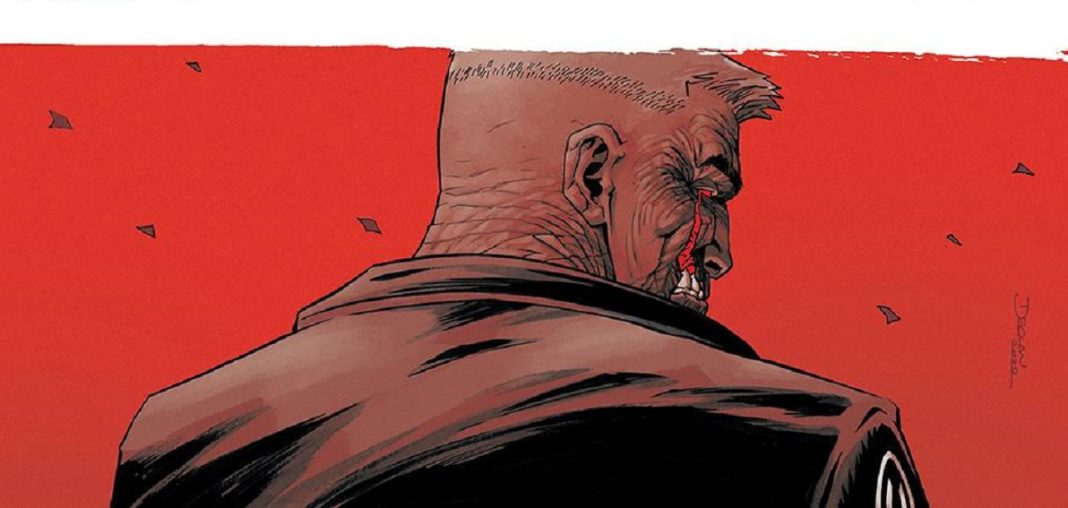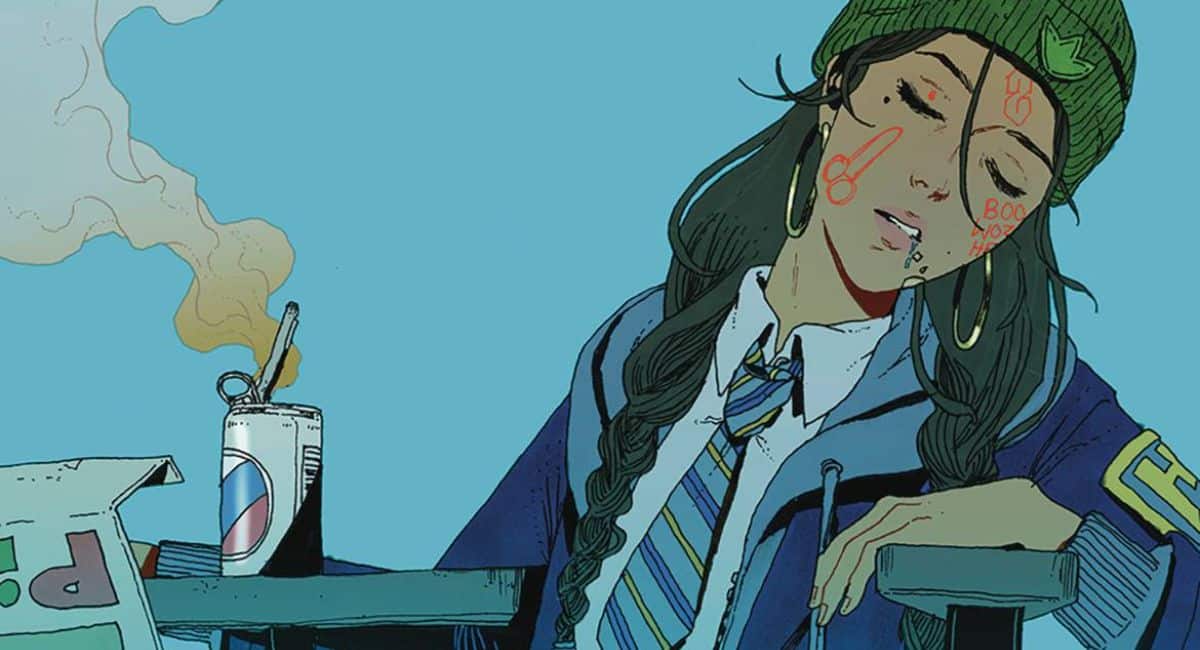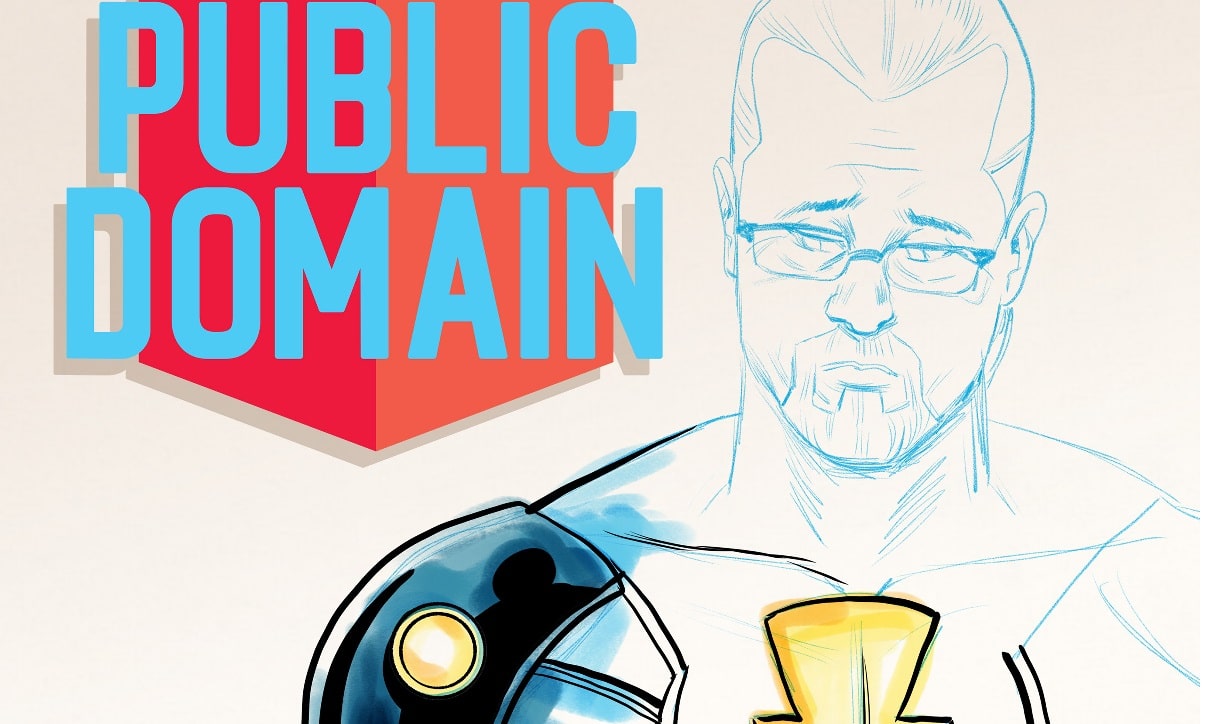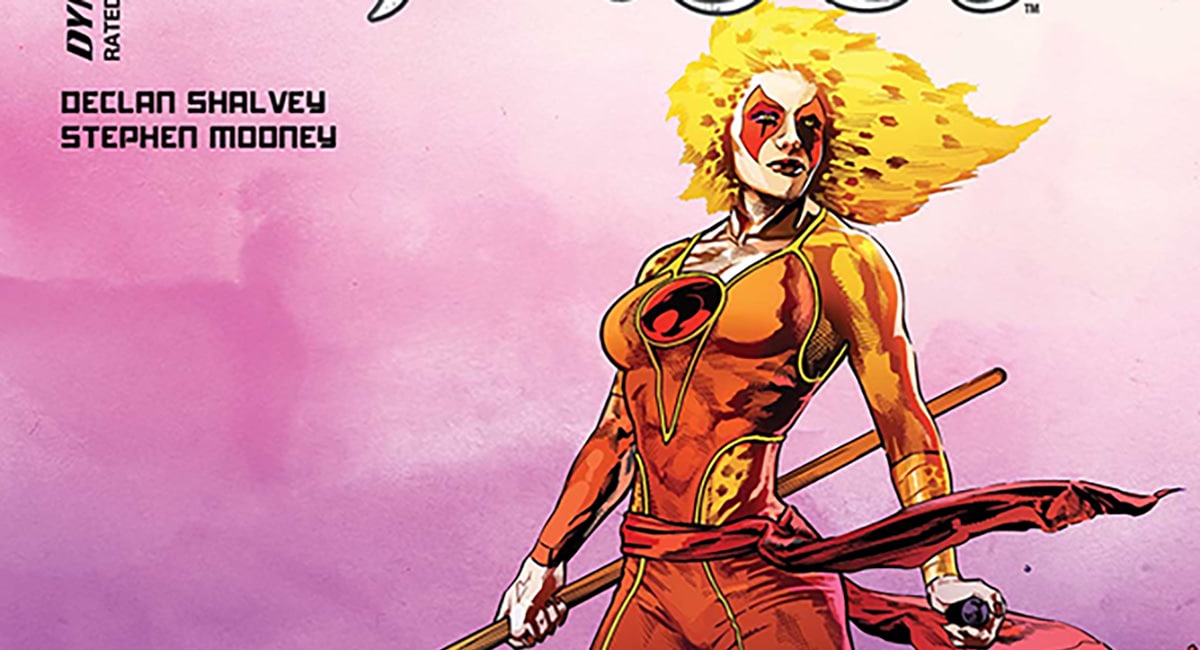Old Dog [REDACT ONE] Vol 1.
Writer/Artist/Colorist: Declan Shalvey
Lettering: Clayton Cowles
Art Production Assistant: Tatjana Segelken
Publisher: Image Comics
Old dog. New tricks. Creative force Declan Shalvey plays fetch with his favorite toys over six issues that show an old genre can come back with new twists. Weird spy-fi is always better with a chip on its shoulder and something to prove– this time? Constantly challenging predictability and proving Shalvey can star while juggling design, color, writing, and drawing.
For a book built by a multitasker, the plot juggles no less than two threads per issue. Our eponymous Old Dog, Jack Lynch, who has awoken after eight years and put right back to wetwork, spends each issue with his own mission. Whether we, the audience, know what Jack’s mission is is slowly trickled out from the decrepit faucets that pockmark the cold world he cuts his teeth in. Sequences crosscut from one another with enough ambiguity to misdirect readers, often resulting in a formulaic betrayal where you feel left out, alienated, and not keeping up. So does Jack. Often with spacey spy-fi, exposition can weigh down the pacing with hard science explainers, but Shalvey keeps the biotech mostly visual and omniscient, so tricks like Jack’s unaging face play poetically rather than logistically.
As with big mystery box spy-fi, vague and “looking for answers” is often the point, but there’s a scathing contrast present with compositions that create succinct focal points with a love of slants, and playing in the foreground and background. Shalvey limits every page to one panel that exists in the gutters behind or underlying all the others, which helps deepen the ennui of Jack’s paranoid spy life. Beyond widescreen compositions dealing in width and depth, Shalvey creates lasting impact with panels that isolate moments from their elements. The room where the punch happens doesn’t matter– the punch does.
This formula can create its own plateau of twists and punches, but thankfully Shalvey is unafraid to swap formulas to tell the same story, which can result in a chapter of spreads intercut with 16-panel grids that decrease panel count cut after cut. That slowly descending staccato rhythm visually slows to its own end, but speeds up the resolution resulting in a welcome pitch change.
In lockstep with its pitch change, Old Dog never fails to paint the mood outside of its temperament. Faded glory golds, brilliantly violent reds, and cold white-green-yellows cast Jack’s black ops world from that around it. Key lights slash complementary colors and the finest paper texture brushes enough atmosphere into the negative space behind character color that focal points are respected. There’s a manicured balance of texture and movement to keep action concisely impactful and cathartic moments resonant [or, at least, slow]. Jack’s turbulent life can sound so quiet, so Shalvey goes sfx-lite, allowing the action to speak with ink, not volume.
Here’s where Old Dog pulls out the big gun as vet letterer Clayton Cowles clips monologues into bitesized snippets that fit in the negative space left, and along Shalvey’s compositional throughline. Sometimes this can feel cloudy with overly verbose lines in reveal dump scenes as Shalvey allocates page count to longer quiet scenes, leaving behind a spread here and there to lay the entire plan out. Cowles holds pace as best he can with torn paper captions that use white text on a black background or a simple rectangular color tag to communicate who is speaking. I grew increasingly attached to the sharp turn some tails use, as if the characters are performing a turn in the tables by saying that. I’m less a fan of increasing character volume with font size rather than balloon size, but Old Dog isn’t compositionally equipped to handle that. This is doubly so for a mixed case book where emphasis is widely bolded and italicized. Fret not as most dialogue is segmented with connective tangents rather than connective tails, which results in a breezy read that helps immensely as most lines hold more than one meaning, especially the deeper into the story you get.
Following in the footsteps of other weird spy-fi like Sleeper and Casanova, Old Dog is a genre revisit with bite reminiscent of The Bourne Identity and, to be quite honest, Shalvey’s previous work, Injection. I know work of this nature can feel stunted by genre and limited to nihilism, so while Old Dog sells itself as an old dog with new tricks, it feels more like the same old dog with the same old tricks. And it never gets old.
Read a new entry in the Trade Rating series every Thursday at The Beat.









